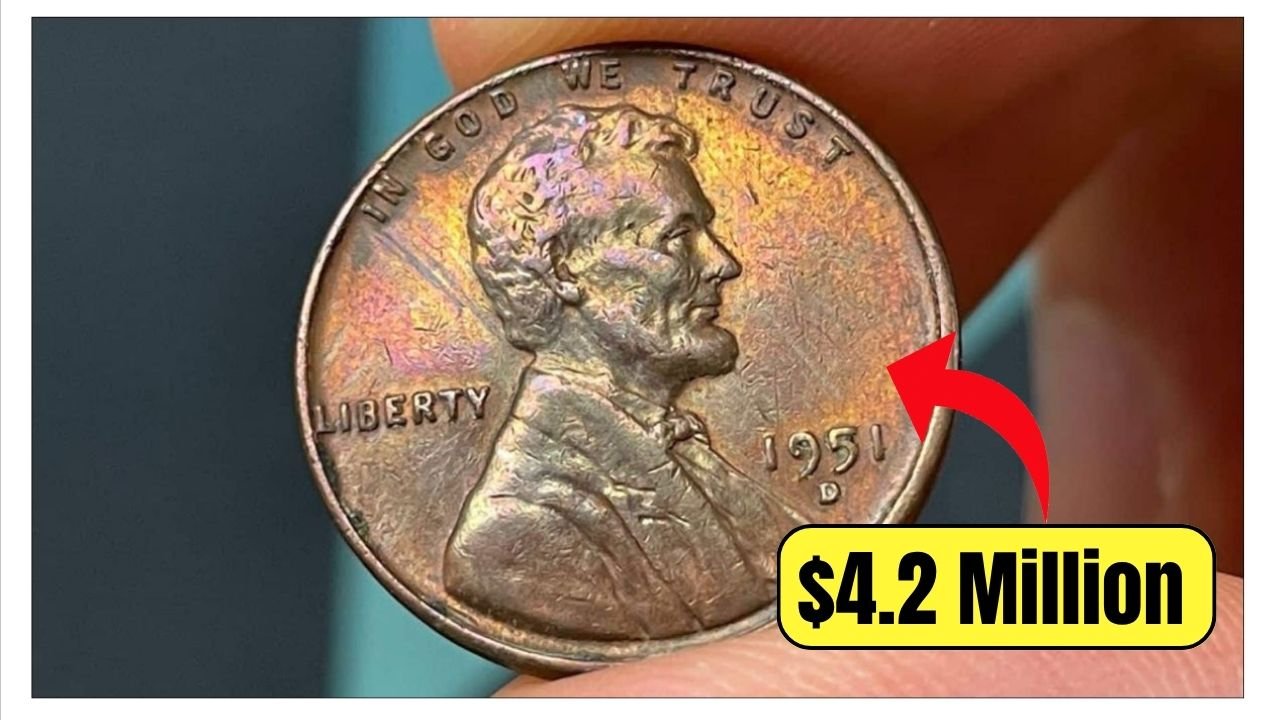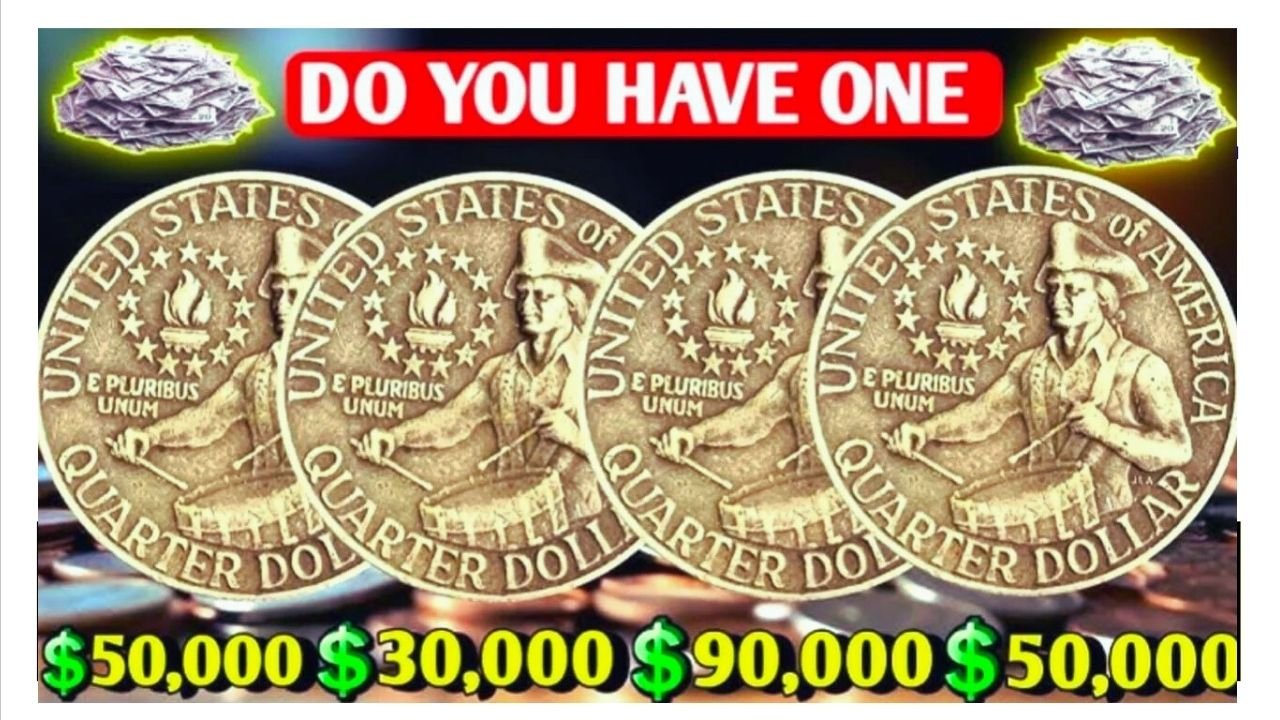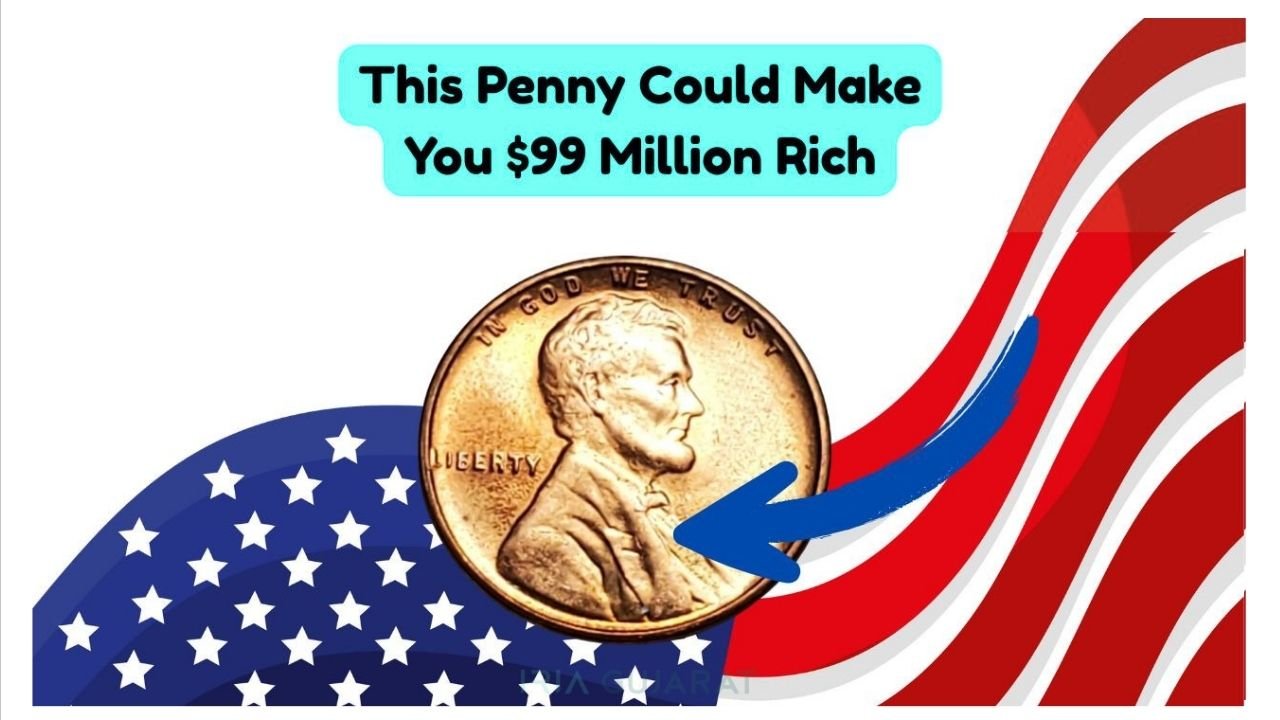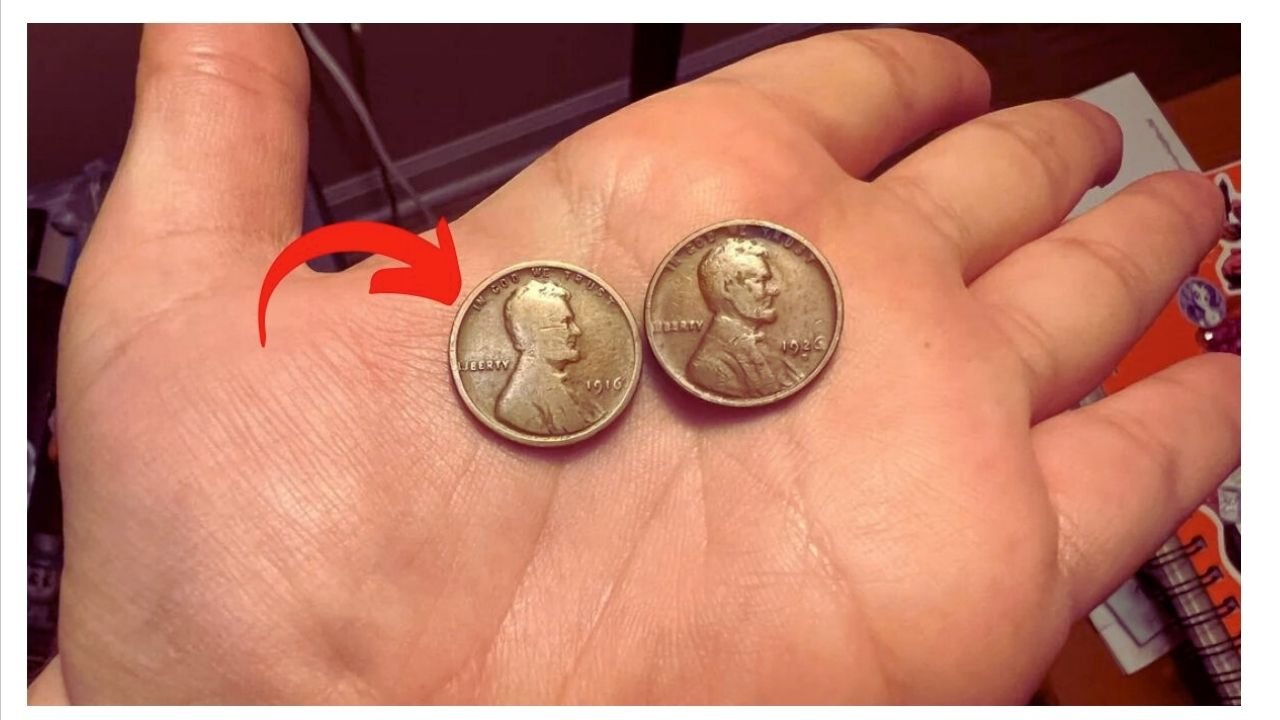Lincoln Wheat Penny Valued at $4.2 Million: In a stunning revelation that’s ignited the numismatic world, a specific Lincoln Wheat Penny—once a humble one-cent piece—has been appraised at an astronomical $4.2 million. What’s even more astonishing? Experts believe this rare coin could still be circulating in pockets, drawers, or old coin jars across the United States.
This isn’t just about a lucky penny—it’s about a piece of American history hiding in plain sight.
Why Is the Lincoln Wheat Penny So Valuable?
Lincoln Wheat Penny Valued at $4.2 Million: The Lincoln Wheat Penny was minted from 1909 to 1958, and while millions were produced, only a few are considered rarities. These rare variants can skyrocket in value depending on:
- Year of minting
- Mint mark (e.g., “D” for Denver, “S” for San Francisco)
- Errors or misstrikes
- Metal composition
- Historical significance
- Surviving condition (e.g., uncirculated or proof)
The $4.2 million Lincoln Wheat Penny reportedly ticks all these boxes—and then some. Lincoln Wheat Penny Valued at $4.2 Million
Details on the $4.2 Million Lincoln Penny
Here are the key known details about this remarkable coin: Lincoln Wheat Penny Valued at $4.2 Million
| Attribute | Details |
|---|---|
| Coin Type | Lincoln Wheat Penny |
| Year Minted | 1943 |
| Mint Mark | No Mint Mark (Philadelphia Mint) |
| Metal Composition | Bronze (should have been steel) |
| Estimated Value | $4.2 Million |
| Condition | Mint State (MS-64 or higher) |
| Known Specimens | Estimated 10–15 |
| Circulation Status | Believed to be possibly still in circulation |
Lincoln Wheat Penny Valued at $4.2 Million: This penny is part of the 1943 Bronze Lincoln Cent error group. During World War II, pennies were struck on zinc-coated steel blanks to conserve copper. However, a few bronze planchets from 1942 were accidentally left in the machines and struck with the 1943 design.
These errors became legendary. Today, only a handful are known to exist—and some may still be out there.
How Did One Penny Reach $4.2 Million?
1. Rarity Drives Value
Only a small number of 1943 bronze cents have ever been discovered. The fewer the coins, the higher the demand—especially from high-end collectors.
2. Historical Error
These were minting mistakes that escaped quality control. Mint errors from critical historical periods (like WWII) are highly coveted.
3. Auction Frenzy
One of the 1943 Bronze Lincoln Pennies previously sold for $1.75 million in a public auction. Private sales have driven prices even higher—with a recent confidential deal placing the price at a jaw-dropping $4.2 million.
What Does a $4.2 Million Penny Look Like?
Many Americans handle pennies daily without a second thought. So what sets this coin apart?
Here’s a breakdown of features to spot: Lincoln Wheat Penny Valued at $4.2 Million
| Feature | Details to Observe |
|---|---|
| Year | 1943 |
| Color | Reddish-brown (not silvery steel) |
| Weight | 3.11 grams (steel pennies weigh 2.7g) |
| Magnetic? | No – bronze is not magnetic |
| Mint Mark | None (Philadelphia Mint) |
| Condition | Sharp details, no major wear or damage |
Tip: Use a small magnet to test. If your 1943 penny sticks to it, it’s steel and likely worthless. If it doesn’t—get it appraised immediately.
Still in Circulation: How Is That Possible?
You might wonder how a coin worth millions could still be circulating in 2025. The answer lies in ignorance and coincidence.
Why It Happens: Lincoln Wheat Penny Valued at $4.2 Million
- People don’t expect pennies to be valuable.
- Bronze 1943 pennies resemble normal coins unless you look closely.
- Estates, garage sales, and old coin jars often contain overlooked rarities.
- Cash-based businesses may receive them without noticing.
Real-Life Example:
In 2019, a Massachusetts teenager found a rare 1943 bronze cent in a family collection. It was later sold for six figures. That same year, another was pulled from circulation by a Pennsylvania gas station clerk.
Bottom Line: These coins are still out there, waiting to be found.
How to Check Your Pocket Change
If you’re curious whether you have a goldmine in your junk drawer, follow these steps:
Step-by-Step Guide
- Sort by Year: Look for all 1943 pennies.
- Do the Magnet Test: Steel will stick; bronze will not.
- Check the Weight: Use a digital scale if available.
- Inspect with a Loupe: Look for minting clarity and signs of wear.
- Get a Professional Appraisal: Contact a reputable numismatist or grading service.
Where to Sell a Rare Penny
If you believe you’ve found a rare 1943 bronze penny—or any valuable coin—here are your options:
| Selling Platform | Pros | Cons |
|---|---|---|
| Reputable Auction House | High visibility, expert vetting | Fees, longer sale timeline |
| Private Collector | High price potential | Risk of scams, hard to find |
| Coin Dealer (certified) | Fast and professional | May offer less than market value |
| Online Platforms (eBay) | Wide audience | Higher risk, fees, buyer disputes |
For maximum return and protection, always consider authentication and certification through PCGS or NGC.
Other Lincoln Wheat Pennies Worth Big Money
While the $4.2 million 1943 bronze cent takes the spotlight, here are a few more Lincoln Wheat Pennies to watch for:
| Year | Mint Mark | Type/Error | Estimated Value |
|---|---|---|---|
| 1909 | S VDB | Low mintage, designer initials | $1,000 – $100,000+ |
| 1914 | D | Scarce minting | $300 – $10,000+ |
| 1922 | No D | Minting error | $500 – $12,000+ |
| 1955 | DDO | Doubled Die Obverse | $1,500 – $25,000+ |
You might be tempted to dismiss pennies as obsolete. But here’s the truth: Lincoln Wheat Penny Valued at $4.2 Million
- Billions of coins are still in circulation.
- People don’t know what to look for.
- History can be sitting in your change jar.
In fact, according to a 2024 poll by the American Numismatic Association, 79% of Americans have never checked their pocket change for rare coins.
So if you do—even occasionally—you’re already ahead of the game.
FAQs About the $4.2 Million Penny
Q1. How many 1943 bronze pennies exist?
Only about 10 to 15 known specimens exist. But more could be undiscovered in private collections or circulation.
Q2. What makes the 1943 bronze penny an error?
In 1943, pennies were supposed to be made of steel to conserve copper for war efforts. Some bronze planchets were mistakenly used.
Q3. Can I find one of these pennies in my change?
Yes, though rare, it is technically possible. A few have been discovered in circulation in the past 15 years.
Q4. What is the best way to get my penny appraised?
Use reputable services like PCGS (Professional Coin Grading Service) or NGC (Numismatic Guaranty Company). Local coin shops can also help—but proceed with caution.
Q5. Are there counterfeit versions?
Yes, many fakes exist. Always verify with a certified appraiser before buying or selling.




